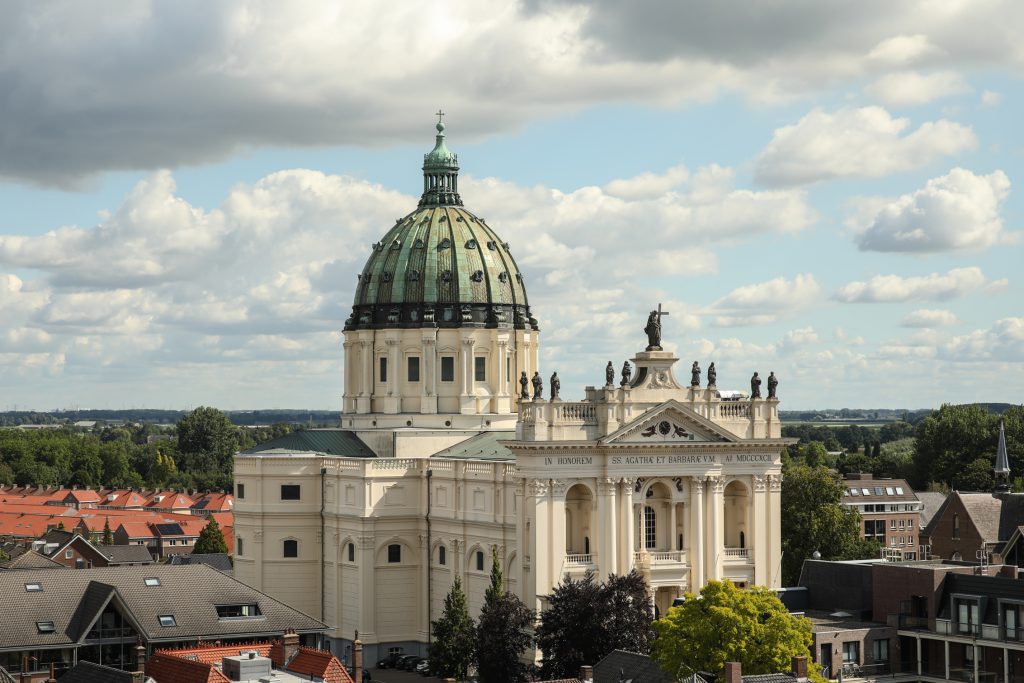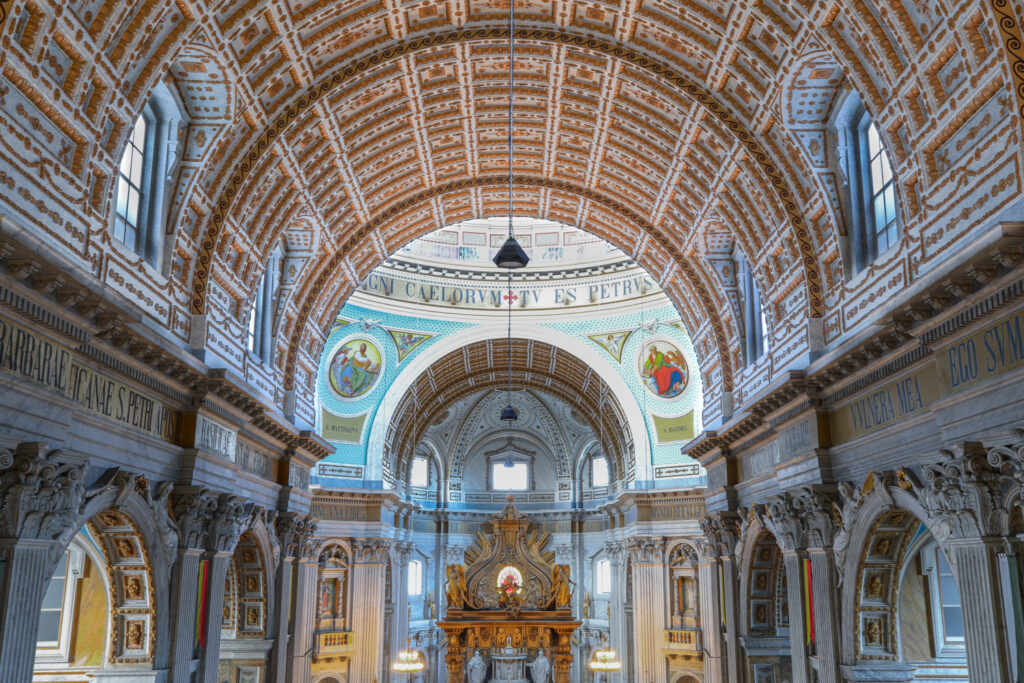An unlikely dream came true in Oudenbosch
Almost every village in Brabant has a medieval church. Square tower, pointed roof, cross on top. Not in Oudenbosch. There is something else there. St Peter's Basilica from Rome. Only a bit smaller. How is that building here in
heavens resurrected?
Not the normal course of events
It was once there, that medieval church of Oudenbosch. Quite a nice one too, a bit like the one you can still find in Wouw. If you visit Oudenbosch, you can find a chapel built with the stones from its demolition. Why was the church demolished? Not a storm, not a fire - nothing like that.
Agatha church was getting a bit cramped and maintenance was overdue. An ambitious architect came along and advised against refurbishment. And there was a pastor to whom that was music to his ears.
A Brabant boy's dream
A church like basilica in Rome. St Peter's Basilica, to be precise. But with the façade of another Roman basilica, St John of Lateran. That seemed ideal to the then pastor Willem Hellemons.
This dream came to him while studying in Rome. Naturally, a boy from Roosendaal was deeply impressed by the eternal city. He often wandered through St Peter's Basilica. Looked out from his study on St John of Lateran, where he was later ordained a priest at 22.

A basilica does not fall from the sky
He returned to Brabant as a priest with that dream in mind. The year was 1834 and he had to be patient. You don't stamp a Saint Peter's Basilica out of the ground just like that. Certainly not in a Brabant village with barely 3,000 inhabitants. Is it in the nature of Halderberge that puzzle pieces often miraculously come together here?
coincide?
The spade went into the ground in 1865, the foundation stone was laid in 1867, and in 1880 the new church was delivered as a shell. In 1892, the façade stood and the bells of the old Agatha church hung inside. In 1912, the interior still far from complete, Pope Pius X elevated the church to basilica minor.
Catholics were allowed to show up again
When Hellemons started work in Oudenbosch, Catholicism was in the doldrums. Protestants dominated the Netherlands. Catholics were tolerated, but that was it. Above all, they should not be
walk. Even ringing the bells was forbidden to Catholics.
The all-important first piece of the puzzle fell in 1853 with the restoration of the episcopal hierarchy. Catholics were allowed to be seen and heard again. After holding their breath for a while, they felt liberated and eager to display their beliefs. What better way to do that than with a new church?
Good money was earned in Oudenbosch
Then capital. Hellemons found loyal support - including financial support - from the new mayor Van den Dries, scion of a rich family, Lord of Middelharnis and also married to a wealthy widow, Anna Melort. He donated a nice start-up capital.
That was a good start but not nearly enough. Building pastor Hellemons needed a steady flow of money to make his dream come true. It helped enormously that the Oudebosch people were doing well.
In the French era, tree growers had done good business with Napoleon, who needed trees for his avenues to keep marching soldiers in the shade. At the time the basilica was built, farmers and workers benefited from the booming sugar industry.
It was the Catholic custom to donate generously and money flowed generously to the church. The more you gave, the nicer your spot in heaven. Rosalia Scholten was a textbook example. She was rich and frugal, besides being single. What she earned from her fabric shop and inherited from her father went straight to the church.
Does she now have a nice place up here? Beneath the dome of the basilica, on the canopy of the altar, there are decorative roses recalling her. At least she has that place of honour.

Creative minds saw opportunities
Hellemons could move forward with funding. However, it was not like the money could be thrown overboard. Which brings us to the puzzle piece of creativity.
An unusual architect drew for the design of Oudenbosch's new church. It was that ambitious young man who thought the old Gothic Agatha church was not worth saving: ir. Pierre Cuypers. He would later define the face of Amsterdam with the national museum and central station. A little further on in
Hoeven, he built the impressive seminary building Bovendonk.
The young Pierre Cuypers went on a study trip to Rome. He took in the architectural style and skilfully translated it into a skeleton built from building materials available in Brabant: bricks, wood and plaster.
Incidentally, Pierre was quite stubborn as a young man. He actually thought the dome of St Peter's Basilica was only moderately successful. He gave the Sts Agatha and Barbara in Oudenbosch a rounder one. More beautiful this way? Many think so.
The dream of one, the work of thousands
In the end, those bricks on the inside did have to give the feel of marble. Every wall was plastered, all the marble painted on top. And then there were the ornaments and frescoes. It was worked on with thousands of brushes. And it was never finished, because like all painting, it had to be maintained.
Pastor Hellemans was lucky with his successors, who carried on his vision. Those who attended masses as children and continued to come faithfully saw the interior being created. How fascinating that must have been?
The building pastor never got to see his dream in all its glory with his own eyes. Far from it, only four years did he preach in his church, then as bare as a new colouring sheet. In 1884, he passed away.
When Queen Beatrix visited the basilica in 1992, she whispered in the ear of her tour guide Jan Bedaf: "what a strange element in these surroundings".
Strange . At first glance, you might indeed characterise the basilica that way. When you know how many puzzle pieces have had to fall into place, you might feel more like wondrous .
